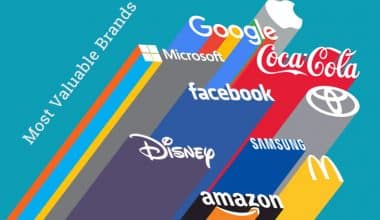Any brand with a devoted following also has a widely recognized logo. The logo for Peloton is no exception. It’s simple, appealing, and memorable, and because it debuted the same year as the brand, the name “Peloton” and the logo are synonymous.
Both the logo and the Peloton name have received worldwide acclaim and for good reason. There are lessons to be learned when a company’s logo is as iconic as the brand itself. That’s why we’ve compiled everything you need to know about Peloton’s history and how their logo came to be, so you can incorporate some of these key lessons into developing your logo.
What Exactly is a Peloton?
Peloton is the abbreviated name for the American exercise equipment manufacturer Peloton Interactive. It primarily provides exercise equipment (treadmills, stationary bicycles) and programs that connect them to the Internet. The manufacturer’s headquarters are in New York.
Meet Peloton
Peloton was founded in 2012 by five friends in the United States. The name “Peloton” comes from the French word “platoon.” The name Platoon translates to “a group of riders in a race,” given that one of the founders, John Foley, was a cycling enthusiast, it was a natural fit. Platoon, in addition to referring to a group of cyclists, can also refer to a small group of soldiers, and the Finnish translation for platoon is fearlessness. With a mission of forming a cycling community, whatever definition you choose to associate Peloton’s name with, the definition works.
Peloton was initially launched as a company that provided interactive fitness training and specialized home gym equipment. It released its first spin bike prototype in 2013, one year after the company was founded. Peloton raised more than $300,000 through a Kickstarter campaign as the prototype was being developed.
Read Also: GM Logo: Why Did GM Rebrand? All You Need
Having an in-class cycle experience from the comfort of your home was unfathomable then, but the Peloton founders refused to give up on their game-changing idea. After completing the Kickstarter campaign, investors began to offer funding, and Peloton received $10.5 million in Series B funding in 2014. This funding round resulted in another $75 million, which assisted the Peloton brand in reaching the next level of growth.
Peloton’s revenue is generated not only by their name-brand gym equipment but also by fitness subscriptions. Peloton users can access thousands of fitness videos, live-stream events, and programming for various price points. With your profile, you also gain access to a personalized member profile, which recommends classes and allows you to view your activity and fitness history. Your member profile also displays your daily fitness logs, badges, and achievements.
The most crucial aspect of Peloton is that the company was founded on the mission of creating a community. Members can virtually take classes with other members to help lift each other and motivate fellow fitness enthusiasts.
The Evolution of the Peloton Brand
Peloton, based in New York City, has grown to become the “Netflix for fitness,” but few people know how Peloton grew from a simple idea to a global brand. The graph below depicts Peloton’s evolution from 2012 to today.
Peloton was founded in 2011-2012
When John Foley had the idea for an interactive fitness company, he told four friends about it: Tom Cortese, Graham Stanton, Hisao Kushi, and Yong Feng. On January 3, 2012, the five of them founded Peloton. When the company started, the goal was to bring together technology, gym equipment, and live classes so people could exercise in their homes.
The prototype was completed in 2013.
After the five friends agreed that this was a company in which they all believed, they created a prototype in 2013. This first bike prototype was not the final product, but it did the job of convincing investors of their vision.
2013-2015: The funding boom began.
Investors initially hesitated because the concept was novel, and they weren’t sure if consumers would embrace it. As a result, Peloton turned to Kickstarter for seed funding. The founders saw Kickstarter as the ideal platform for raising funds and spreading the word about their product (for free). John and his team only set a $250,000 goal but exceeded it by raising more than $307,000.
The following year, in 2014, the team received Series B funding. They raised $10.5 million during this round, which was used to update the Peloton bike, ultimately making it more consumer-friendly. Peloton opened its first studio location in Manhattan’s Chelsea neighborhood the same year. Members could take Peloton classes in a studio setting if they didn’t want to do so from the comfort of their own homes.
In 2015, the team raised $30 million in another round of funding. This time, the funds were used to finance delivery-related solutions, additional retail locations, and bike production. In addition to the $30 million, Peloton raised $75 million to expand its software engineering team.
Peloton debuts in 2018
In January 2018, Peloton entered the treadmill market, expanding its fitness offerings. Tread+ was unveiled at the annual Consumer Electronics Show in Las Vegas. The fact that it streamed classes on a large 32-inch interactive screen with a sound bar directly attached set this treadmill apart.
Peloton went public in 2019
Peloton’s initial public offering (IPO) occurred on September 26, 2019. Peloton raised $1.6 billion for this IPO, and with their entry into the NASDAQ, Peloton stock could be traded immediately.
Peloton capitalized on the COVID-19 pandemic in 2020.
While some businesses struggled with the COVID-19 pandemic, Peloton did not. Fitness studios and gyms suffered as people were forced to stay at home, while Peloton had the opposite problem. The demand for at-home gym equipment and classes increased, and more and more people sought Peloton’s products.
Peloton expands its offerings
Peloton introduced new products to their Peloton line in response to the COVID-19 pandemic. This included the Bike+, a more expensive bike, and the Tread, a less expensive treadmill. In addition, Peloton reviewed its pricing and reduced the price of its older bike models to attract more customers.
Obstacles Along the Way
Navigating a new market as a new company isn’t always easy. That was the case for Peloton. Peloton has navigated delivery issues and faulty products that have been dragged through the press and media over the last decade. Peloton, on the other hand, was always quick to respond. They are a company that has always shifted and accepted responsibility for any problems that have arisen as a result of its product. Customers are loyal to the brand because of their customer service and responsiveness.
Peloton has also had to deal with pricing issues. The first Peloton bike cost $1200, a reasonable price for many customers. The problem was that sales were lower than expected. Peloton interpreted this as a sign that their customers believed a low price meant a low-quality bike. As a result, Peloton raised the price of its bike to $2245. While navigating the price point was a temporary stumbling block, their responsiveness and ability to pivot paid off, and sales skyrocketed with this higher-priced bike.
The Meaning and History of Peloton’s Logo
Peloton’s logo, designed by Eric Hwang, was first introduced with the company’s launch in 2012. He deliberately included graphic details that represented the brand’s message – its name. Eric chose minimal, bold, monochromatic colors, legible typography, and a symbol that conveyed Peloton’s affiliation with the fitness industry when designing the logo.
Eric’s work on the Peloton logo was not his first. Before designing the logo, he worked as a graphic designer and photographer in New York City. He has also designed Pronto, Hummingbird, Access Opportunity, and Unite Us.
Even though Peloton has been around for about a decade and the brand has evolved, the logo design has remained consistent. But it’s understandable why the company wouldn’t change the logo – it works. Peloton members are emotionally attached to the brand, so they are emotionally attached to the logo.
At first glance, the Peloton logo appears black and white, but it is much more than a couple of colors, a letter, and an emblem. This iconic logo is examined in greater detail below.
The Peloton logo’s first (and only) version from 2012 to the present.
Peloton’s logo was first introduced in 2012 with two simple features: a wordmark and a graphic. Eric combined the company’s core mission (to provide fitness through at-home spin classes) with the company’s initial. The globally recognized symbol was created by combining the letter “P” and a spin pedal.
The “P” pedal is displayed in a monochromatic color scheme and reads like a wordmark. However, in some cases where the logo is used, it appears in a fuchsia color tone. All these elements work together to create an appealing, minimal, modern logo that is legible and scalable across all mediums.
The Font in the Peloton logo
Peloton’s logo features a single font. The font was chosen for its bold characteristics. Like the logo, the font was created by Eric Hwang, who combined elements from the Futura and Brandon Grotesque fonts. Eric designed a sans-serif, all-capital-letter font similar to those of Radikal Bold, Noah Head Extra Bold, and Orquidea Sans Demi Bold. Peloton’s logo font is impossible to imitate, and this exclusive font is impossible to find for personal use.
The Color of the Peloton logo
Peloton’s logo is made up of two prominent colors and one color that appears on occasion. The dominant colors are black and white, conveying feelings of calm, confidence, and loyalty. But let’s take a closer look at each of those colors individually.
Because of its boldness, black was chosen as the logo’s main focal point. Black is often associated with mystery and conveys a wide range of emotions ranging from sadness to anger to fear on the one hand while also conveying opposite emotions such as power, prestige, elegance, wealth, and formality on the other.
White is another prominent color that helps to balance out the black. It conveys humility, safety, and trust while giving the logo a clean appearance. White is a popular color for logos because it represents purity, peace, and goodness.
Fuchsia is a less common Peloton logo color, but it occasionally appears on a secondary logo. This vibrant color can elicit different emotions than monochromatic color palettes. Fuchsia is a more vibrant color representing passion, energy, and willpower. Aside from that, fuchsia is a color that conveys maturity, assurance, and cheerfulness, giving Peloton members a different feeling than the previous simple black-and-white logo.
The Peloton Logo Symbols
Peloton’s logo consists of a single symbol: an abstract bike pedal. Eric combined a circle with two diagonal lines to create this pedal. The circle was purposefully chosen as a symbol because circles represent community, wholeness, and totality. The diagonal lines, representing direction, tension, and action, were chosen carefully, just as the circle was. When these symbols are combined to form a pedal symbol, the pedal can convey feelings of excitement, direction, and fitness – all of which are central to the Pelton brand.
Related Articles
- MOUNTAIN BIKE BRANDS: 17 Best Picks & Detailed 2023 Reviews
- WHAT IS A WIREFRAME: Web Design, Mockup, UX, & Difference
- FITNESS SOFTWARE: Top Best Fitness Software 2023 ( Updated List)
- AFFILIATE PROGRAMS FOR FITNESS: 20 Best Affiliate Programs Fitness 2023
- MOTIVATIONAL SPEAKERS: Top 10 in the World, Black, Women & How to Become the Best






